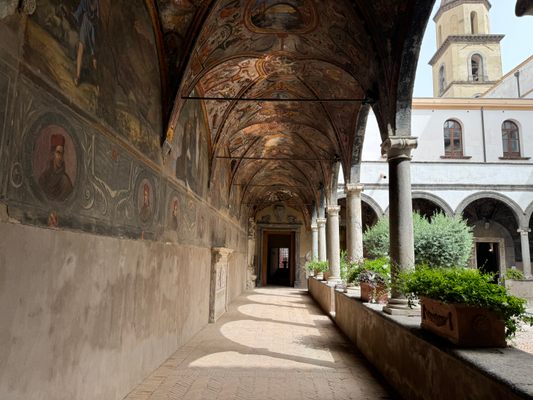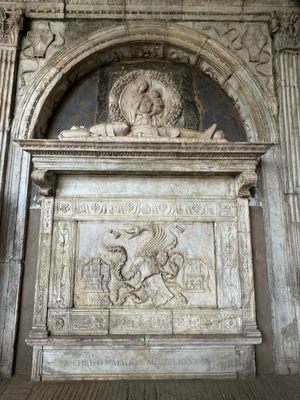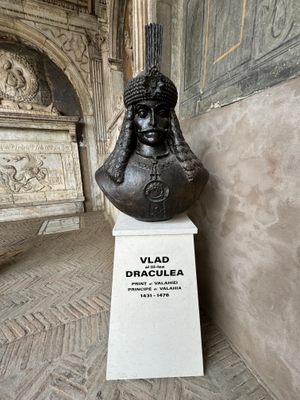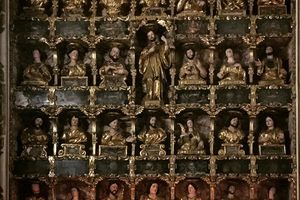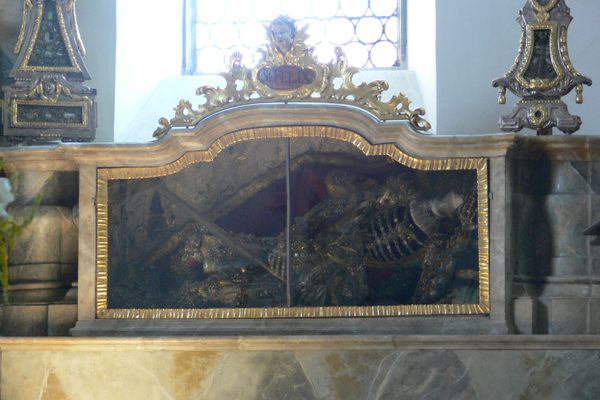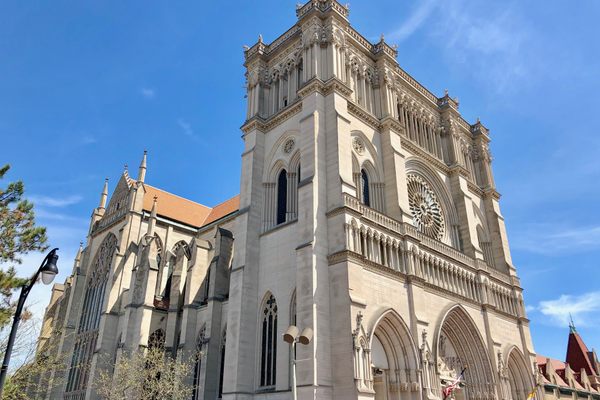About
Is the tomb of Vlad the Impaler, the basis for Bram Stoker’s character Dracula, actually located in the cloister of a 13th-century church in the center of Naples? Some researchers believe so, and the church that hosts the tomb, Santa Maria di Nova, happily promotes the connection.
Vlad III was Prince of Wallachia between 1448 and 1476, a time during which legends of his cruelty earned him the nickname "Vlad the Impaler." In the fall of 1476, Vlad's army was defeated in a battle with the Ottomans. The exact circumstances of his death are unclear, but many believe that he was killed and beheaded, with his head taken to Constantinople and his body left in Romania.
The beheaded body was traditionally believed to have been buried in a monastery on the island of Snagov, near Bucharest. So what’s the basis of the extraordinary claim that Vlad's remains are actually in Naples?
For one, no human remains were discovered in the Snagov tomb—only animal bones. Secondly, according to researcher Raffaello Glinni, a daughter of Vlad the Impaler, may have been living in exile in Naples, and thus could have had her father’s remains buried there. Third, the ornate dragon and knight’s helmet carved into the tomb’s façade could represent the Order of the Dragon, to which Vlad’s father belonged and from which Vlad received his sobriquet "Dracula" (son of the dragon). There is also an encrypted epigraph behind the tomb that has yet to be fully deciphered, but two decrypted words suggest a connection to the Impaler: "Blad" and "Balkans."
The theory of whether this tomb truly marks Vlad's burial place remains unproven. The prevailing theory holds that the Prince of Wallachia was buried in Comana Monastery, which stands near the battlefield where his army was defeated.
Regardless, the tomb in Naples is striking, and the 5 euro entrance fee also grants access to the painted cloister and Church of Santa Maria di Nova, which also contains the body of 15th-century Italian saint James of the Marches, among other things.
Related Tags
Flavors of Italy: Roman Carbonara, Florentine Steak & Venetian Cocktails
Savor local cuisine across Rome, Florence & Venice.
Book NowPublished
August 2, 2024
